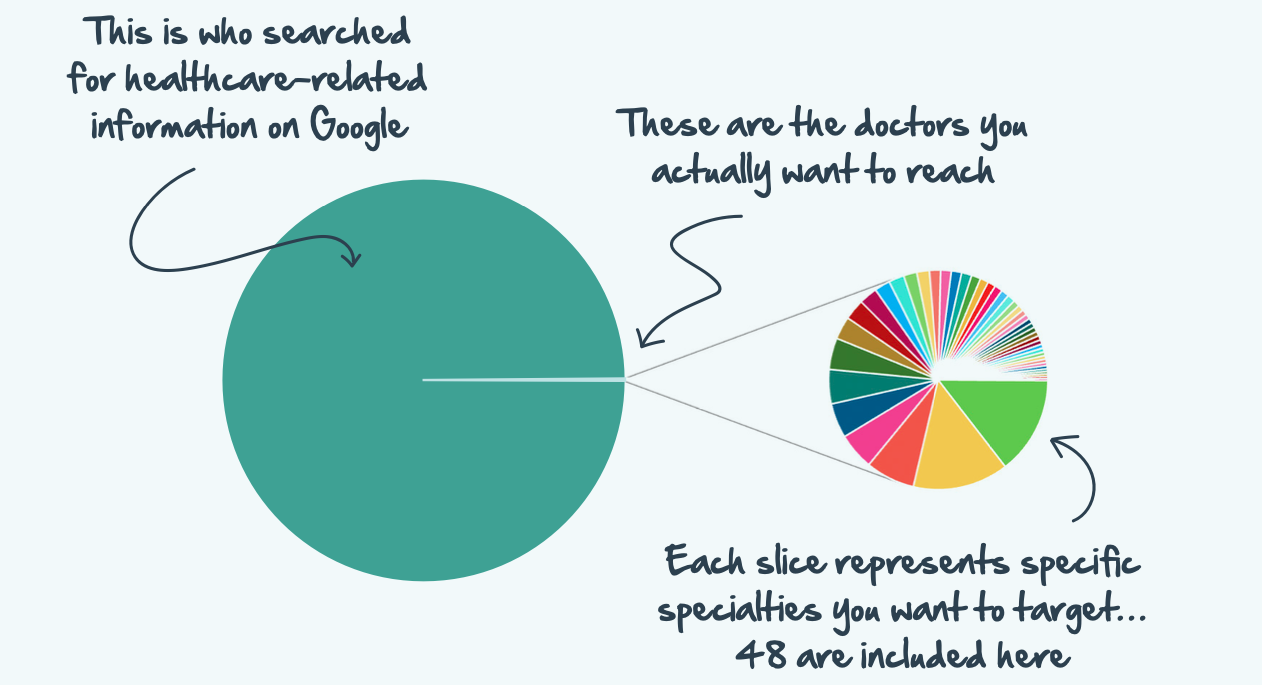HCP Advertising, Part 3: The Best Platforms for Advertising to HCPs
This is part 3 of our 5-part series about HCP advertising and marketing. Part 1 covers healthcare marketing segmentation for your target audiences. Part 2 explains how to create good content, followed by this part, which discusses the best platforms to use to promote said content. Finally, we round out the series with part 4, which explains the ideal nurture strategy, and end with part 5, on measuring, optimizing, and replicating results.
Crafting great content is crucial, but it’s not enough on its own. You could write the perfect eBook that solves your audience’s most pressing problems—but if it sits on a landing page that no one ever sees, it won’t do you or them any good.
The next important ingredient for marketing to healthcare providers is getting your content onto the right platforms for advertising to HCPs.
Want all the details on how to effectively build HCP advertising campaigns?
Sign up to receive our upcoming eBook
The Best Platforms for Advertising to HCPs
Determining the right platforms will depend on the specific audience you’re trying to reach and the type of content you’re promoting. The main ones to consider for HCP marketing are:
Search
Like everyone else, HCPs use Google. You’ll likely want to invest in both paid ads and organic search engine optimization (SEO) tactics. However, you can’t currently target your ads to certain audiences. Targeting is only for certain keywords. To avoid blowing your entire HCP budget on consumers, you must be very careful with the search terms that you use… and, even more importantly, the negative keywords that you use.
Paid Social Media
For B2B (business-to-business) products, LinkedIn is usually the best social media option, and about 7.1 million healthcare professionals reportedly use the platform. LinkedIn also offers a lot of highly specific targeting options, like geography, education, and skills, that can be useful for pinpointing niche audiences. Twitter, despite its limited reach for HCPs and much-publicized upheaval, can also be a great source, of inexpensive leads.
Trade Publications and Associations
These can be a good way to reach your niche audience directly, and many already have media programs and sponsorship opportunities.
Apps
Like the rest of the population, HCPs spend a lot of time on their phones, and many use industry apps in the course of their work. This can be another good way to reach them.
Direct Mail
Despite what many people think, direct mail is not dead; it’s just evolving. But unless you can bring some creativity to the process, your mail is likely to go straight to the recycling bin.
Advertising to HCPs Relies on Precise Targeting
Healthcare providers make up a small part of the overall population in the United States. But the portion of the population with questions about health and healthcare is pretty close to 100%. Google sees over a billion searches related to health every day. In this case, targeting the most popular keywords would mean reaching a lot of consumers (aka the wrong people)—which will gobble up your entire budget without yielding your intended HCPs.
You’re not selling soda or sneakers. There’s a specific group of people in a position to buy, prescribe, or refer your solution. Spending money to reach anyone else is an expensive waste of your budget.
Targeting is also important for understanding who is consuming your content. Analytics that show you an eBook was downloaded 1,000 times may look good at a glance—but if 999 of those were irrelevant to your business, that number obscures the one worthwhile lead you earned.
If the three most important factors in real estate are location, location, location, then the most important aspects of HCP marketing are targeting, targeting, targeting.
Precise Targeting + Platform Mix = A Perfect Match
You won’t need to be everywhere to reach your particular audience, but you will want to invest in a mix of different platforms. That enables you to reach a larger number of relevant people, and it also keeps you from becoming too dependent on any one option.
When you put all your eggs in a single platform basket, you can wake up one day to find
a hole in that basket. Many companies (including us) learned that the hard way when Facebook changed its algorithm around eight years ago. What had been a top-performing platform for promoting content assets became much less reliable overnight—and hasn’t been the same since.
Understand that while most of these platforms rely on ad revenue, that doesn’t mean you’re their priority. Google, LinkedIn, and your other options don’t place any particular value on brands that are advertising to HCPs. They prefer brands that target larger audiences because they can generate more revenue from them. In healthcare, that’s typically products and services aimed directly at patients. That means you may have to be creative to get your targeting just right and be nimble to respond to any sudden changes they make to their rules and algorithms.
While there are also several platforms designed to specifically market to HCPs, they tend to charge much higher premiums than your other options. They may be worth considering if you have enough budget to spend and have tapped out general-purpose platforms. But they tend to work better for general branding goals rather than direct response.
Keep your platform mix flexible and open to new options. A simple algorithm change has the potential to turn your best platform into a budget black hole overnight if you’re not paying attention.
We’ve created content, figured out where we are promoting it, and are starting to get leads – what’s next?
Getting your campaign in market is just one part of what it takes to successfully advertise to HCPs. Of course, you don’t just want to get them to convert on your campaign – you want to get them to purchase your product. For high-consideration or high-ticket items like yours, prospects tend to take more time to do research and consider all their options before making a final selection – that’s where nurture comes in.




